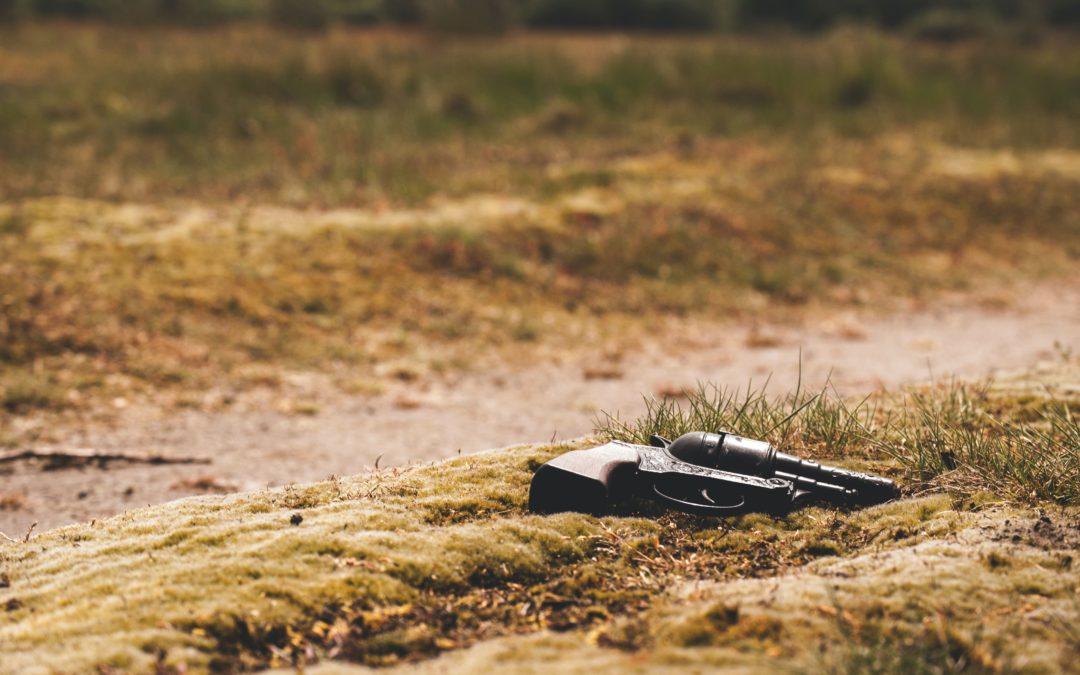For many folks, the terms “noir” and “crime fiction” are synonymous with big cities. There’s the stereotypical imagery of bank robbers and fedora-topped detectives stalking the mean, rain-slicked streets. But of course, crime fiction can take place anywhere — including small towns, or the backwoods. In that spirit, here are seven examples of top-notch rural crime fiction, new and old, for your holiday reading pleasure.
Red Harvest by Dashiell Hammett
If you’re mostly familiar with Hammett from The Maltese Falcon (the book or the movie), it’s well worth picking up with Red Harvest, an uncompromising and brutal tale in which the unnamed Continental Op (the anti-hero of several Hammett tales) heads to Personville (which the residents term “Poisonville”) on a routine investigation. Soon enough, the bodies are piling up, the full extent of the town’s corruption is revealed, and the Op is doing his cynical best to manipulate everyone. While Hammett is justifiably revered for his skills as a mystery writer, Red Harvest is perhaps the best example of how effectively he wrote action: the gun battles and fights — and there are many — are described in a dynamic way that never becomes too overwrought or pulpy.
Bluebird, Bluebird, by Attica Locke
The near-simultaneous murders of a black man and white woman in a small East Texas town draw the attention of black Texas Ranger Darren Mathews, who finds himself quickly enmeshed in a deadly thicket of long-buried secrets, racial animosity, and more killings. The suspense in Bluebird, Bluebird is almost unbearable, and the mystery itself has a satisfying conclusion—but what the book says about the legacy of segregation is worth much thought.
Pop. 1280 by Jim Thompson (also worth it: The Killer Inside Me)
Jim Thompson had a thing for corrupt sheriffs. Maybe it was his harsh Texas upbringing, in which he learned all too well about the seamy underside of small-town life. He recognized there’s something compelling in someone sworn to uphold the law doing his best to subvert it in the nastiest ways possible. Today’s crime writers continue to draw a lot of inspiration not only from his plots, but also the voices of his killers and broken people — evil to the core, yet understandable in their motives. Give either Pop. 1280 or The Killer Inside Me a read.
Stray Dogs by John Ridley
Long before he won an Oscar for the screenplay for 12 Years a Slave, John Ridley wrote this overlooked noir masterpiece about a big-city drifter, John, who ends up in a flyspeck of a Nevada town, trying to stay alive as literally everything seems to go wrong for him. Unlike most crime fiction, which tries to make anti-heroes at least somewhat sympathetic, Ridley takes a more interesting path in rendering John in the most reprehensible light possible — giving the audience a certain vicarious pleasure as he’s broken and beaten down. It’s as funny as it is nasty, but nobody ever said that noir had to be nice. (In my opinion, Stray Dogs is also far superior to U Turn, Oliver Stone’s meth-fever movie based on it.)
Blacktop Wasteland, by S.A. Cosby
Beauregard “Bug” Montage isn’t just the best auto mechanic you can find in this stretch of rural Virginia—he’s also the best getaway driver on the East Coast, even though he’s trying to drop the last vestiges of his criminal past. Like many former criminals in crime fiction, though, he finds himself driven by desperate circumstances to engage in a new heist. Blacktop Wasteland is alternately brutal and elegiac, a stunning example of rural noir and a devastating portrait of the devastation that comes from dead-end poverty.
Give Us a Kiss by Daniel Woodrell
At an impressionable age I was introduced to this novel, which takes place in the Ozarks and reframes a story as old as the Hatfields and McCoys in a noir context. In his portrayal of pot farms and decades-old blood feuds, Woodrell embraces one of the key rules of writing crime fiction: you need a bit of humor — however dark — to balance out the bloodshed and bleakness, or it’s going to turn into a slog. Give Us a Kiss is reminiscent in many ways of Joe Lansdale’s “Hap and Leonard” series.
Fire in the Hole by Elmore Leonard
When Leonard wrote Fire in the Hole, he probably didn’t expect it would inspire a long-running television series. But that’s exactly what happened with Justified, which spent six seasons following U.S. Marshal Raylan Givens as he deals with all sorts of dark characters in rural Kentucky. The novella draws heavily not only from Leonard’s legendary crime fiction work, but also his Westerns — and it features his usual firecracker dialogue.

